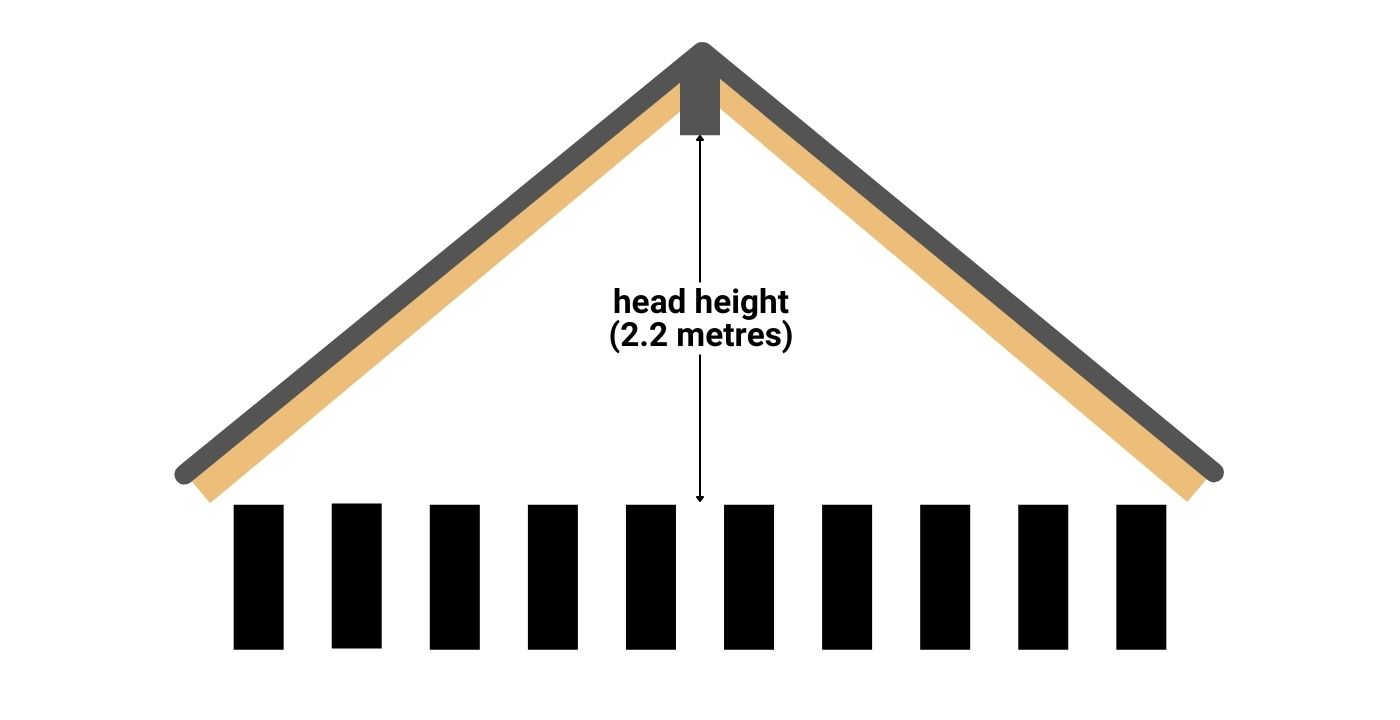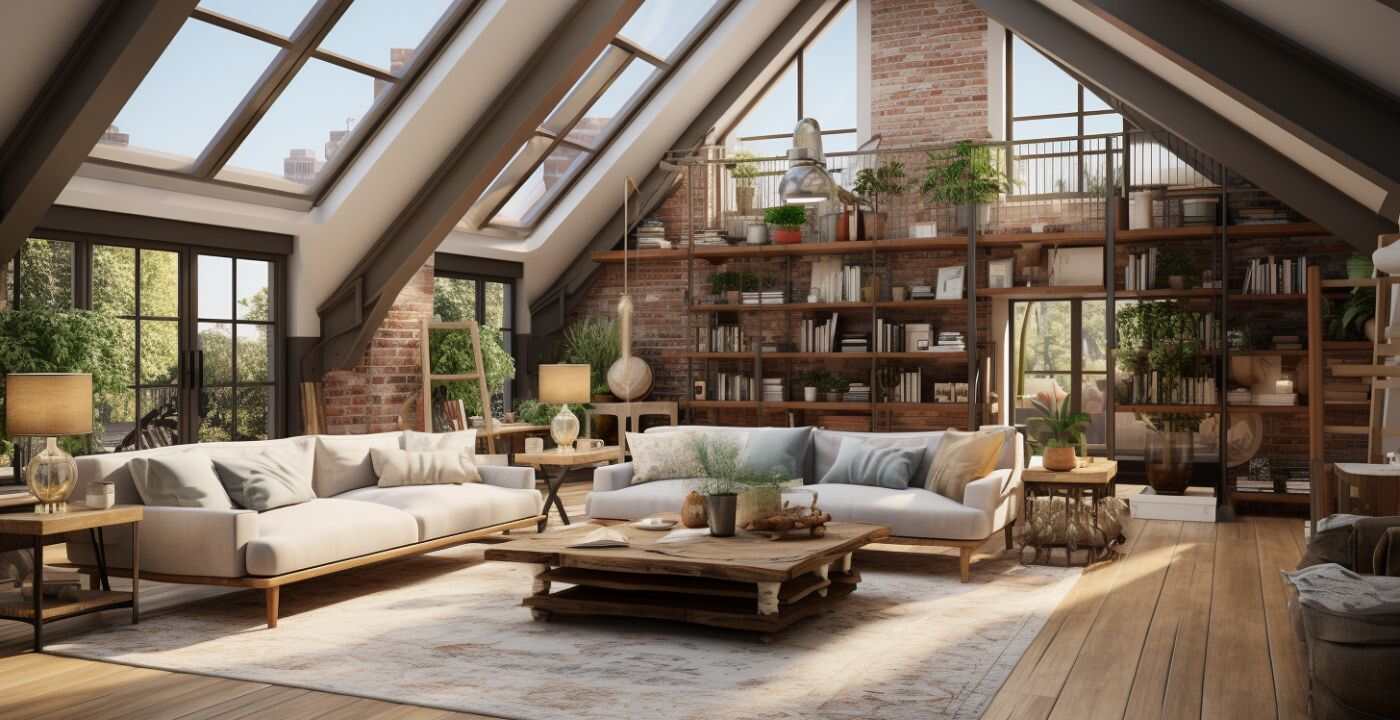
The Low Ceiling Loft Conversion Lowdown!
Here are the key points:- UK Building Regulations stipulate a minimum ceiling height of 2.2m from joist to ridge beam.
- Mansard conversions, dormer conversions, and raising the roof all provide additional headspace to turn the loft into a great living area.
- Low roof loft conversions make impressive storage rooms with the right choice of storage solutions and proper ventilation.
- Always consult a professional to fully understand your options.
The Minimum Height for Loft Conversion in the UK

For some fairly obvious reasons, if you are going to want to turn your loft to a living space, then building regulations state a minimum ceiling height for that loft conversion in the UK of 2.2 metres. That’s enough room to stand up and not bang your head. It’s measured from the top of the floor joists in the loft, to the underside of the ridge beam before the conversion is done, which means that things like the ceiling finish and floor covering can result in a slightly smaller actual room head height, typically of around 1.9m. In truth, it’s much more comfortable to aim for 2.4m.
It’s not essential for the entire loft to have this headspace and sloping ceilings are a feature in a great many loft conversions, but being able to stand up comfortably in any living space is a must.
Tip - Assess Height and Structure
It’s important to know exactly what position you are in before jumping ahead with your low roof loft conversion project. Make sure you have properly measured and assessed your loft area so that you can make any future decisions with full understanding of the situation.
Tip - Consult a Professional
Not only will a professional fitter know exactly what to take into account, but they will also be able to advise on your options. An early consultation will help you put the whole project into perspective and reassure you regarding any fears – as well as providing a solid estimate for you to budget the project.
The Type of Loft Conversion
There are a number of ways to increase the height of your loft room, but two loft conversion options that are guaranteed to produce a spacious living area are lifting the roof or undertaking a mansard loft conversion.
Neither are small tasks, however, and will require planning permission as you are changing the external structure of the house.
Both roof raising and mansard conversions are typically for detached properties, where your structural changes won’t affect any direct neighbours. Assuming your property is suitable, then either of these options are an excellent way to add large and comfortable rooms into the under utilised loft space.
Tip - Consider Using Dormer Windows to Get That Head Height
Dormer loft conversions are a very popular way to increase head height in smaller loft areas without being as dramatic as undertaking either of the previous options. A dormer window involves an extension of a section of the roof to form an area of improved head height and allow for a vertical window. They are extremely popular, especially for terraced and semi-detached houses as they have no impact on neighbouring roofs.
One of the more common low roof loft conversion ideas, a dormer loft conversion often won’t require planning permission and can be done for a very reasonable budget.
Tip - Think About Lowering the Ceilings Below The Loft
One option that is sometimes overlooked is lowering the floor rather than raising the ceiling. If structural considerations mean that a mansard conversion is impossible, then it may make more sense to take the needed space from below. Many homes have tall ceilings in the upper floor and much can be gained by dropping these to obtain the minimum head height for the loft conversion.
Making the Most of a Low Ceiling Loft Conversion
Tip - Consider Alternative Uses for the Space
Perhaps you cannot fit the full master bedroom and en-suite you first wanted, but that doesn’t mean the conversion is a bad idea. Turning a dusty unused space into a well-designed storage area in your home, for example, will free up a great deal of space in the rest of the home.
Tip - Maximise the Available Loft Space with Smart Design Options
There are plenty of fantastic design solutions available to make the most of limited loft spaces. Under eaves cupboard storage with sliding doors, for example, provides ample cupboard area without taking from the main room.
Smaller loft rooms can be almost TARDIS-like when paired with creative storage solutions.
Tip - Pay Attention to Ventilation and Insulation
It’s always essential to make sure the loft conversion is properly ventilated and insulated. Poor airflow can lead to damp, condensation, and other problems that lead to unwanted mould and even structural damage.
All loft conversions must have the proper insulation. This is key to ensuring your home maintains energy efficiency and will ultimately lead to lower energy bills throughout the year.
Whether you are using your loft conversion as a main living area or even just a storage area, good ventilation and insulation are essential.
Loft Conversion but Roof Not High Enough? Contact London Lofts Ltd.
Honestly, until you’ve had a professional opinion, you won’t really know all your options. At London Lofts Ltd., our experts have dealt with a huge number of low ceiling loft conversions and are skilled at making the most of the available space. We can advise on a range of low roof loft conversion ideas, and will help you get the very best from your unused attic.
We’re here for everything from a well ventilated storage solution to a full mansard loft conversion – why not give us a call today?




